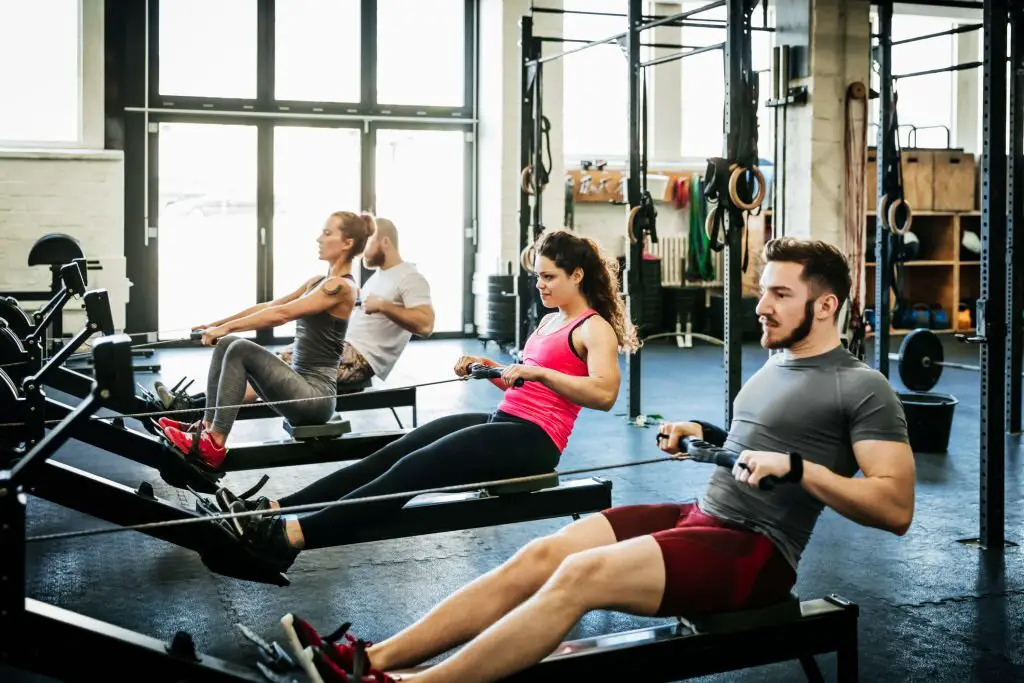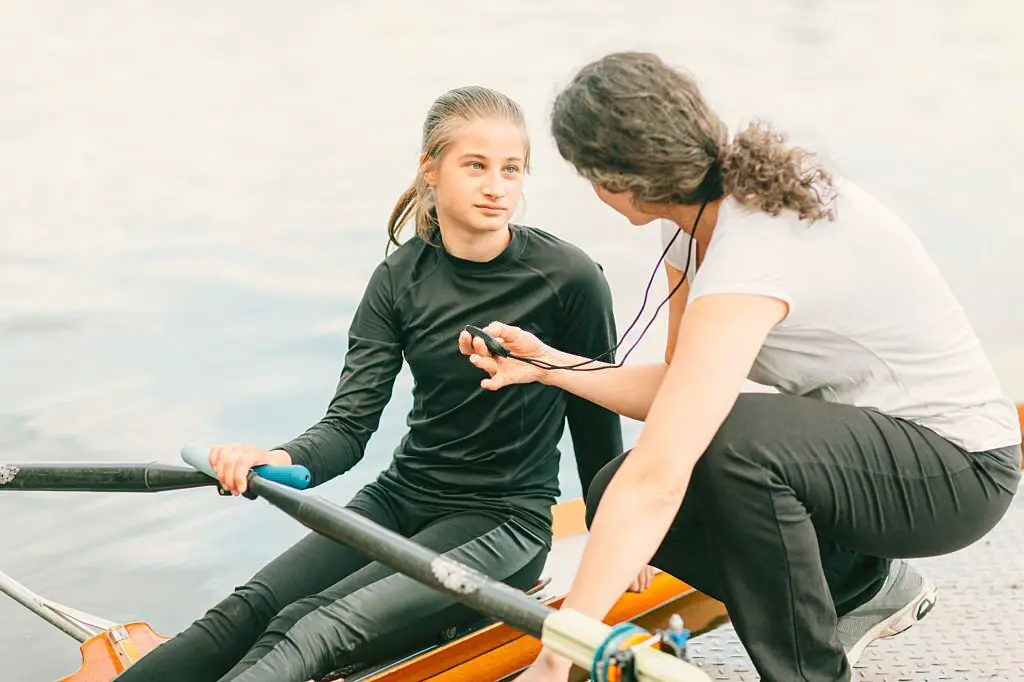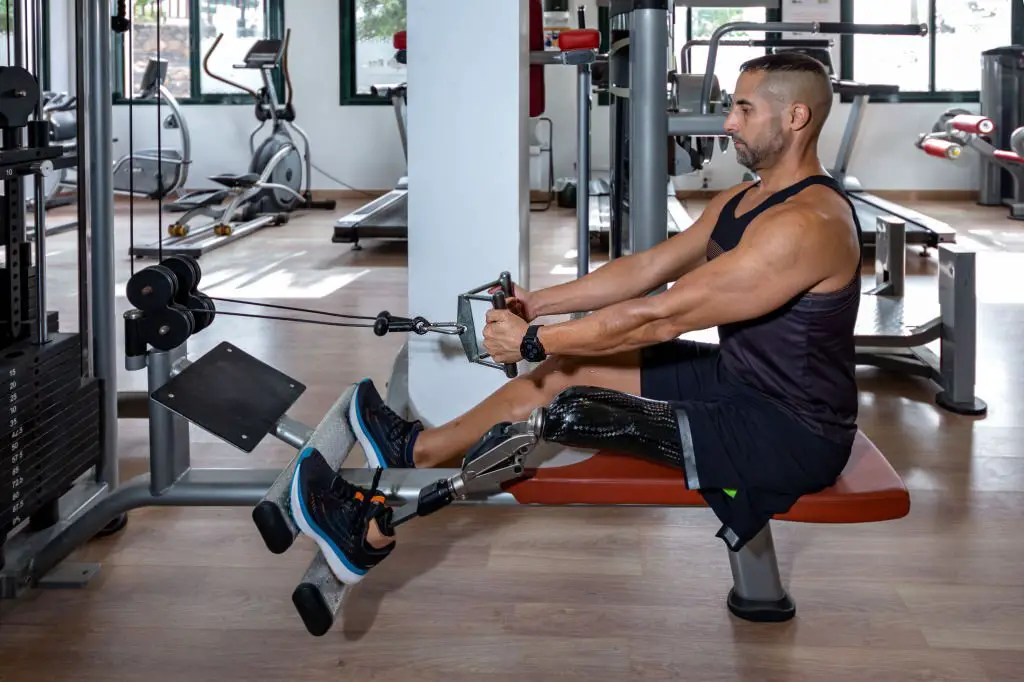Achieving a personal best time in the 2K erg can be a challenge, especially for athletes of different ages. Whether you’re an adult looking to beat your previous record or a younger athlete striving for success, there are strategies that can help you reach your goal and achieve your personal best time. With proper training techniques and dedication to the sport, you will be able to master the 2K erg and see improvement in no time. Read on as we discuss strategies tailored specifically towards each age group so that everyone has guidance when it comes to achieving their respective goals!
Table of Contents
Training Strategies for Older Athletes (Age 18-24)

For older age groups (18+), anaerobic interval training should be incorporated into workouts to increase speed capabilities over short distances and build up fatigue resistance. Technique-focused drills are still essential for this age group, but less emphasis should be placed on strength training due to potential injuries that could occur from lifting heavier weights or doing more repetitions than necessary. Additionally, high intensity intervals followed by active recovery periods will allow them to work at their highest levels throughout each session without burning out early. Finally, adequate rest should always be taken between workouts so that maximum performance can be achieved inside the boat or on the ergometer come race day!
Common Mistakes to Avoid During a 2K Erg Test
Achieving personal best times in the 2K erg is a worthwhile goal for any age group. Whether it’s to compete against others or simply to beat your own time, there are several strategies that can be used to help you reach and exceed your goals. For those in younger age groups, shorter intervals with more rest may prove beneficial as they allow for explosive bursts of energy without completely tiring out the muscles too quickly. Longer intervals on a lower stroke rate will also help build up endurance and stamina so that each repetition is done with less fatigue than before.
For older age groups, longer intervals at higher stroke rates can be effective as they build both power and technique while allowing for adequate rest between efforts. Interval sessions should focus on building strength in order to increase speed over long distances; this can include multiple sets of 500 meters at an increased intensity level followed by controlled recovery periods between sets which allows the body time to recover from previous efforts while still pushing forward towards achieving new heights.
Finally, cross-training activities such as running or swimming may provide additional aerobic benefits when incorporated into training plans; these activities encourage proper breathing techniques which prepare athletes for increased levels of exertion during their 2K erg workouts. Additionally, incorporating yoga poses into warm-ups and cool-downs helps improve flexibility and stability thus providing better body control while rowing over longer distances which ultimately leads to faster times!
Proper Warm Up and Cool Down Routines
It is important to focus on developing a good erg training strategy, tailored specifically for each age group in order to achieve personal best times in the 2K erg. For Junior competitors aged 18 and under, it is essential to build their strength and stamina through interval-based rowing workouts. This can be done by incorporating short bursts of high-intensity rowing with longer periods of rest intervals between sets. It is equally as important for junior competitors to maintain proper form while using the correct technique throughout their workout sessions. Additionally, junior athletes should also work on building mental toughness by visualizing successful race strategies prior to competing in real races or during practice drills.
For Masters rowers aged 19 and above, they need an entirely different approach compared to juniors due to their physiological differences such as muscle weakness, reduced flexibility, and decreased aerobic capacity that come with increasing age. To maximize performance potential at this stage of life, masters’ rowers must focus on utilizing low-intensity exercises that emphasize muscle conditioning rather than outright power production. These types of activities include stretching techniques before every session along with dynamic warm-up exercises like bodyweight squats or lunges afterward; these will help increase range of motion and lower injury risk down the line while preventing fatigue from setting in faster than usual during long ergs. Finally, masters athletes should strive for consistency within their training regime while ensuring adequate recovery time between hard efforts so that peak performance levels can be maintained over a longer period of time
Preparing for the 2K Erg Test
Achieving personal best times in the 2K erg by age group is an achievable goal for those who dedicate themselves to proper training and preparation. For younger athletes, it’s important to build a strong aerobic base by focusing on consistent low-intensity rowing over long distances. This practice helps increase strength and improve endurance, which can help young athletes better handle the rigors of higher-intensity racing pieces. As they grow older, incorporating more high-intensity intervals into their routine will pay off on race day with greater power output and shorter split times. Additionally, as athletes progress through each age group they should focus on perfecting their technique by emphasizing efficient body movement during each stroke cycle, as well as maintaining a steady rhythm throughout the entire piece. Finally, when it comes time to race it’s essential that athletes are mentally prepared; visualizing success before getting onto the machine can go a long way towards improving performance. All in all, with commitment and dedication anyone at any age can reach for their personal best times in 2K erging!
Recovery Techniques to Improve Performance
Achieving personal best times in the 2K erg is an important goal for many rowers, and there are several strategies that can help athletes of any age group improve their performance. For younger rowers, proper technique is key to improving speed and efficiency on the erg. Proper posture will ensure the athlete’s body is aligned correctly so they can get more power from each stroke. Additionally, developing healthy habits such as stretching before workouts and eating a nutritious diet will help young athletes maintain peak conditions throughout training sessions. Older rowers should focus on building endurance with steady-state workouts designed to increase time spent at the race pace. Interval sets should also be included in order to build up anaerobic capacity and develop a strong finishing kick during races. Cross-training activities like running or weightlifting can also be beneficial as these exercises promote muscle growth which increases strength and power when rowing on the machine. Finally, mental preparation is essential for all ages; visualizing success prior to races helps motivate rowers while providing them with tools for better concentration during competition. By following these steps, athletes of all ages have an excellent opportunity to achieve their personal best times in the 2K erg!
Using Technology to Track Progress
Achieving a personal best time in the 2K erg is an achievable goal for any age group. To reach this milestone, there are several strategies that can be implemented to help improve performance.
The first step for athletes of all ages should be to understand the importance of proper warm-up and recovery techniques. Warming up helps prepare both the body and mind for intense exercise by increasing blood flow, oxygen delivery, and muscle temperature; while cooling down aids with post-exercise recovery by gradually slowing down the heart rate and returning muscles back to their pre-exercise state. Understanding how different warm-up routines affect performance can go a long way toward helping younger athletes achieve their goals in the 2K erg test.
In addition, having a structured training program tailored to each individual’s strengths and weaknesses should also be considered when preparing for a 2K erg test. Different exercises or drills such as interval sprints or strength conditioning could help athletes build endurance as well as power output over short periods of time – essential components of completing a successful race on an indoor rower machine like the Concept2 Model D/E/F (the most commonly used machines). Additionally, tracking progress through periodization planning will allow coaches or trainers to develop workout plans based on current fitness levels that create gradual improvement over time leading up to peak performances on race day.
Finally, psychological preparation is key when it comes to achieving personal best times in the 2Kerg test – especially at more competitive levels where every second counts! Visualizing success before racing can increase motivation during competition; while focusing on technique rather than pace allows one’s body mechanics to take priority over speed which may lead to early burnout if not managed effectively throughout the entire data set collection period. In conclusion, following these important steps will ensure consistent progress throughout all stages of training leading up race day – ultimately resulting in better overall results!
Mental Preparation and Visualization Techniques
Achieving personal best times in the 2K erg is an important goal for rowers of all ages. Knowing the right strategies to reach this goal can help athletes succeed.
For younger athletes, building a solid foundation of basic technique and proper form is essential. Focus on learning how to apply power effectively while maintaining good posture and body alignment throughout the stroke cycle. This will help ensure efficiency with each pull and prevent injury from poor technique. Additionally, practice a variety of drills that target key technical elements like catch timing, finish position, leg drive, etcetera as these small details add up to big improvements over time. By increasing aerobic capacity through steady-state training or interval workouts specific to rowing, young athletes will be able to maintain higher speeds for longer periods during their races.
For more advanced age groups such as high schoolers or collegiate-level athletes, mastering race strategy comes into play in addition to having sound technique and fitness levels already established from earlier years of training. Athletes should focus on pacing themselves correctly by finding out what intensity they are capable of sustaining over 2000m without fading at the end due to fatigue or excessive lactic acid build-up; it may require trial-and-error testing before arriving at the optimal race plan but once found it provides them with a clear roadmap for success going forward into future races! Other important aspects include working on mental toughness & visualization techniques which promote confidence in one’s ability as well as developing tactical awareness so they can better understand what their competitors are trying to do – whether it’s sprinting ahead early or holding back until later stages – so they can adjust accordingly midrace if needed (e.g., make bigger pushes when trailing).
By taking these steps towards improving physical conditioning & technical proficiency along with honing mental skills & strategic planning abilities both novice and experienced rowers alike have greater chances at achieving personal best times in 2K erg competitions!
Understanding the 2K Erg Test
Achieving personal best times in the 2K erg by age group can be a challenge, but there are several strategies that you can employ to reach your goals. For younger athletes, it is important to focus on proper technique and form. Building strength and endurance through weight training and high-intensity interval training (HIIT) will help set you up for success on the erg. Additionally, implementing specific drills such as pauses or low-rate pieces into your practice routine can provide an extra edge come race day.
For more experienced athletes, it is essential to focus on maintaining the quality of movement during long sessions while still pushing yourself beyond what you think your body can do. Cross-training with other sports such as running or cycling can also improve overall performance both physically and mentally by introducing different workout patterns than those typically used when rowing exclusively. Additionally, taking time for restorative practices such as stretching or yoga helps keep muscles strong and flexible so that they are able to perform at their peak capacity when needed most.
Overall, achieving personal best times in the 2K erg requires dedication inside and outside of practice hours whether you’re a novice rower or a seasoned veteran of the sport. With some hard work, consistency in training habits, and smart recovery practices everyone has the opportunity to make progress towards reaching their goals no matter what age bracket they fall into!
Training Strategies for Younger Athletes (Age 13-17)

For older athletes between 18-35 years old, mental preparation is key to success in achieving personal best times on the ergometer. Visualizing successful scenarios prior to races can provide beneficial psychological motivation when tackling tough workouts or competitions. Furthermore, focusing on breathing techniques both during warm-up exercises and during racing itself can help improve physical efficiency of movements which leads to faster times all around. Finally, having realistic goals set beforehand allows for more accurate pacing as well as providing tangible objectives that can be tracked over time leading up to events or races where personal bests are desired outcomes.
Overall it’s important for any athlete regardless of age or experience level to incorporate individualized strategies into their workout regimen in order to reach peak performance potential with every race they compete in on the 2K Erg machine!
Nutrition Tips to Optimize Performance
Achieving personal best times in the 2K erg is an attainable goal for individuals of all ages. In order to achieve this goal, it is important to have a well-developed plan that incorporates several different strategies. For individuals in younger age groups (12 & under), focusing on increasing strength and endurance through aerobic exercises such as running, biking or swimming can help build up their muscles and increase the stamina needed for success on the erg. Additionally, developing good technique when rowing will also be beneficial since technique plays a large role in performance. Young athletes should take time to practice drills such as body prep drills and catch drills which are both designed to improve posture while rowing and teach proper timing of movements.
For older athletes (13 & over), there are still some basic techniques that can be incorporated into their training program but they should also focus on interval training. Interval training is an excellent way for rowers of any level to build strength and develop speed because it allows them to train at specific paces throughout the workout instead of just trying to maintain a steady pace throughout the entire session. Additionally, incorporating race pieces into workouts helps simulate actual race scenarios so athletes can become comfortable with racing conditions before they actually compete on the water or ergs… It’s important for these athletes not only to learn how to push themselves during intervals but also to understand proper pacing strategies so they don’t burn out too quickly during races. Finally, stretching after each workout session is important not only from an injury prevention standpoint but also from a recovery perspective so that your muscles stay fresh between sessions and you’re able to perform at your best every time you get onto the erg!
Achieving a personal best time in the 2K erg can be a great way to measure your progress as an athlete. It is important to understand that different age groups require different strategies when it comes to achieving their best times. For younger athletes, focusing on technique and proper warmups is key to avoiding injury and developing good habits early on. Older athletes should focus more on strength training and interval training, while also maintaining adequate rest periods between sessions. No matter the age group, all athletes should stay motivated by setting realistic goals and tracking their progress with each session they complete. By following these simple guidelines, anyone can strive to achieve their own personal best times in the 2K erg!


